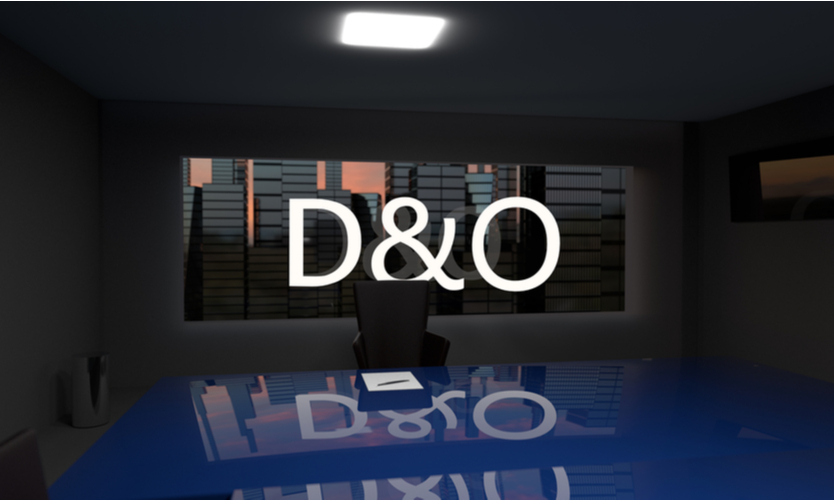D&O rates continue to decline, but some insurers plant heels on cuts
- October 11, 2025
- Posted by: Web workers
- Category: Finance

Public companies continued to see reductions in their directors and officers liability premiums during the year-end renewal season, but experts say some insurers look set to resist further discounts.
The pushback on further cuts is making more work for brokers in a market already abundant with capacity to obtain the most robust coverage for the best price for policyholders, they say.
“Most clients are not exclusively focused on price, but they want an insurer that will pay a claim, so that balance has to be there,” said Andrew Doherty, a New York-based partner and practice leader of executive and professional risk solutions at USI Insurance Services LLC.
Insurers have been digging in harder on rates for defense costs in claims scenarios, Mr. Doherty said.
“They’ve got their magnifying glasses out and are scrutinizing the bills a bit more,” he said.
The second half of 2024 saw an increase in flat rate renewals compared with rate cuts earlier in the year, said Joseph Spallone, a New-York based executive vice president and head of management liability insurance at Sompo.
“We continue to see more carriers hold the line on rate and a willingness to walk away from underpriced risks, often in middle layers of insurance towers. Market caps are at all-time highs, and pricing hasn’t kept pace with that increased risk, so we are seeing increased discipline in the market,” he said.
On average, public companies saw a roughly 4% decrease in premiums, but companies within a year or two of their initial public offerings are seeing more significant discounts, said Washington-based Ruth Kochenderfer, D&O product leader for the U.S. and Canada at Marsh LLC.
Rate decreases for IPOs are “very different” than the rate trends for other publicly traded companies because IPOs were paying higher premiums from the start, she said.
Other companies that may have seen more significant percentage decreases include those that had improved financial risks or are coming out of the “claim penalty box,” said Tim Fletcher, New York-based CEO of Aon PLC’s financial services group in the U.S.
Private companies also saw low single-digit rate declines, mainly because that market has remained more stable, their premiums did not increase as sharply during the hard market, and they don’t face as many risks as public companies, he said.
Some companies seeing rate decreases are buying additional limits and expanding coverage for formal investigations, Mr. Fletcher said.
There has also been an increased focus on D&O coverage for chief information security officers and for cybersecurity exposures since the SolarWinds incident and recent U.S. Securities and Exchange Commission disclosure requirements. Policyholders, specifically CISOs and chief technology officers are looking for clarity in their D&O coverage, Mr. Spallone said.
Capacity
An abundance of capacity contributed to rate declines, albeit at a decelerating pace as the market moves toward stability.
Despite the capacity, the vast majority of policyholders renew with the same primary insurer, and, typically, more carrier changes are at middle or high excess layers, Ms. Kochenderfer said.
“Policyholders are focused on carriers with strong claims handling experience and are looking for consistency in their carrier partners and those that they can establish deeper relationships with across multiple lines of business,” Mr. Spallone said.
Notably, one insurer, Argo Group International Holdings Inc., recently exited the D&O market and sold its renewal rights and related unearned premium resources to Core Specialty Holdings Inc., which announced the deal on Jan. 6. Core said Argo’s D&O and errors and omissions professional liability divisions had in-force gross premiums written of $155 million as of Dec. 1.
Questions remain about the impact the upcoming change in presidential administrations will have on regulation and the market, and issues such as climate change, supply chain challenges and balancing risk sheets also have insurers and policyholders “navigating uncertain times,” Mr. Fletcher said.
Artificial intelligence is going to be the “X factor” going into 2025 because of underwriter concerns that companies may overstate their AI capabilities or be negatively impacted by AI’s effect on their business and industry, Mr. Doherty said.
A surge in bankruptcy filings is also a concern for D&O buyers, Ms. Kochenderfer said.
“Components of a D&O policy covering the entity may be viewed as a company asset in a bankruptcy proceeding. Side A-only insurance, because it only covers individuals, is usually not considered a company asset,” she said.
“Thus, having more Side A-only insurance could be valuable if a company files for bankruptcy because it may not be subject to the bankruptcy and could pay claims asserted against a director or officer.”
“The overarching theme is that D&O risks remain elevated, and rates are moving towards a more stable level, but the supply of capacity is still putting pressure on price points,” Mr. Fletcher said.



